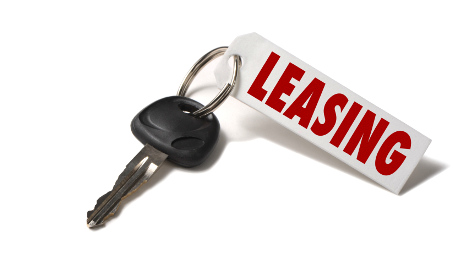Experts Consider Possibility of Non-Prime Leasing

By subscribing, you agree to receive communications from Auto Remarketing and our partners in accordance with our Privacy Policy. We may share your information with select partners and sponsors who may contact you about their products and services. You may unsubscribe at any time.
IRVINE, Calif. –
With new-vehicle leasing continuing to track on a pace industry watchers have never seen previously, SubPrime Auto Finance News wanted to know if automakers, captive finance companies and other institutions are interested in ramping up the volume even more by pulling the lever in the non-prime consumer space.
Both Kelley Blue Book senior analyst Alec Gutierrez and Autotrader senior analyst Michelle Krebs maintained what several other industry observers noticed and finance company leaders acknowledged — competition is prying open the lid on terms as more vehicle installment contract volume goes to buyers lower down the credit spectrum.
But as far as leasing goes, neither Gutierrez nor Krebs are projecting a flood of new metal leaving dealership showrooms connected with lessees holding credit scores in the 600s.
For the record, Experian Automotive mentioned in its latest report that leasing credit has loosened, as the average new-vehicle lessee had a credit score of 718 in Q1 2015, down from 721 the previous year.
“Just looking at lending in general, what we have seen over the last six to 12 months is there has been an increase in the number of loans given to people with less than prime credit. We’re not necessarily talking about deep, deep subprime here, but we are seeing the manufacturers’ captive finance companies and even the more traditional banks expanding their credit portfolios to include subprime and less-than-prime credit worthy borrowers,” Gutierrez said.
“Now as far as how that transitions over to leasing, I would suspect that we’ve seen the same sort of activity happening in their lease portfolios as well,” he continued during a conference call with Krebs that Autotrader and KBB hosted for the media earlier this week.
Subscribe to Auto Remarketing to stay informed and stay ahead.
By subscribing, you agree to receive communications from Auto Remarketing and our partners in accordance with our Privacy Policy. We may share your information with select partners and sponsors who may contact you about their products and services. You may unsubscribe at any time.
Although there has been some leasing activity “in that direction,” Gutierrez suspects that any momentum generated in recent months perhaps might not be sustained with the ongoing expectation that the Federal Reserve will push interest rates higher.
“My expectation is you’re not going to see a significant shift in the aggressiveness in their credit portfolios from a risk perspective only because the future is a little bit hazy at this point as far as how sustainable this lease business is going to be in the next year or two. You’re seeing some inching in that direction but don’t expect to see a significant shift,” Gutierrez said.
And leasing originations already above the 30-percent mark for some time now, Krebs has her doubts about that segment of vehicle financing drifting much lower down the credit spectrum in light of the volume of vehicles hitting the wholesale market.
“I think automakers are going to be careful about that level going very much higher in part of what Alec mentioned earlier about what happens with all of those off-lease vehicles,” Krebs said. “We’ve got a tremendous amount of off-lease vehicles coming this year and going forward. While the market seems to be able to absorb all of these now, this is a cyclical business.”
So while Gutierrez and Krebs aren’t ready to say non-prime leasing is about to surge, perhaps a path captives and other institutions might trek is booking more deals with non-prime consumers for a certified pre-owned vehicle — what those off-lease models often become after the original term matures.
“There is less risk of depreciation. A certified unit will have already taken the brunt of any sort of deprecation,” Gutierrez said. “You know that the captive isn’t going to be on the hook to take that car back in two or three years. I would say that’s likely a better avenue than trying to get more folks involved in an already overheating leasing market.”
Then Krebs added, “And the automakers and dealers are going to be under pressure to move all of those certified pre-owned vehicles.”


